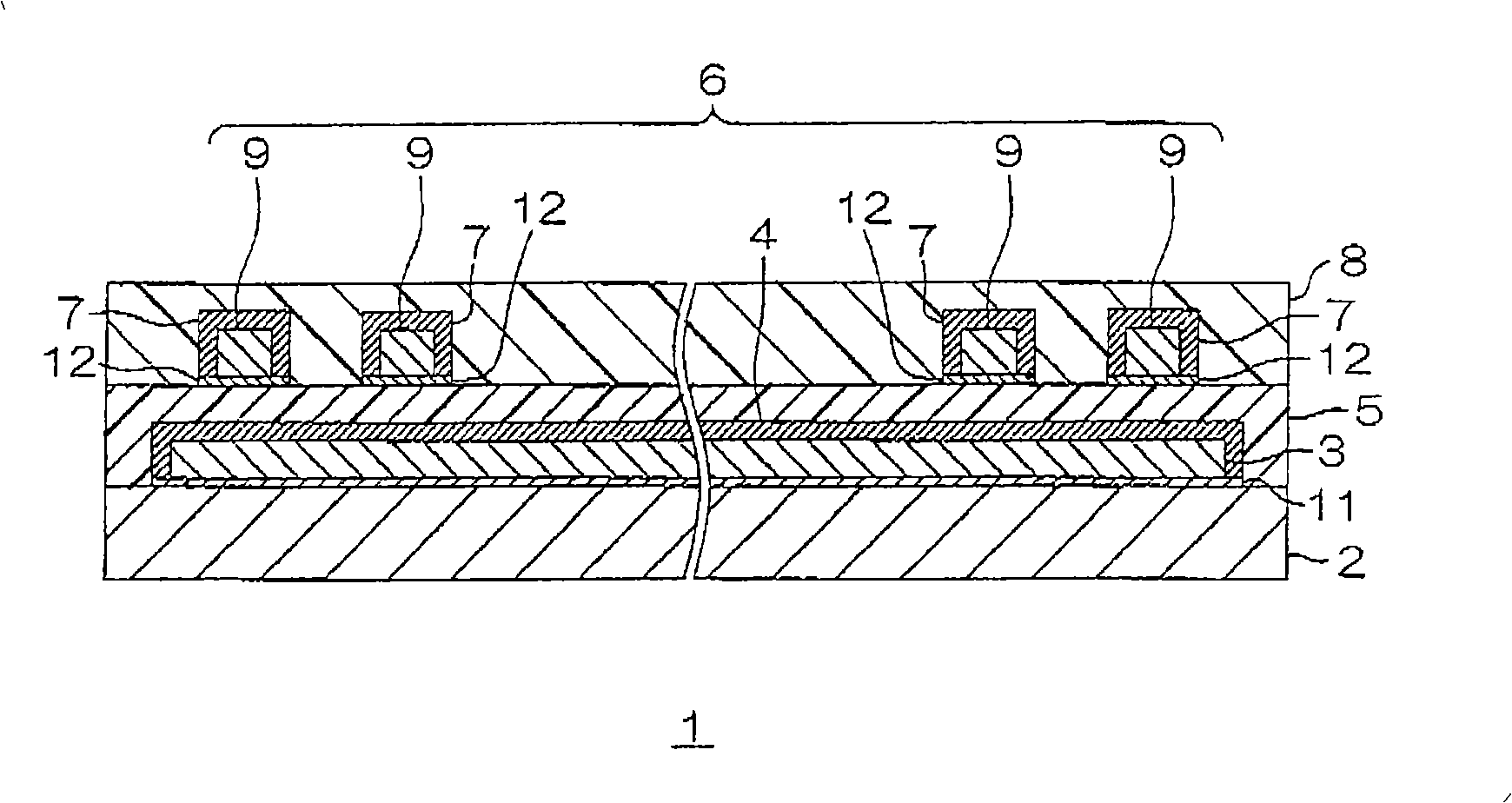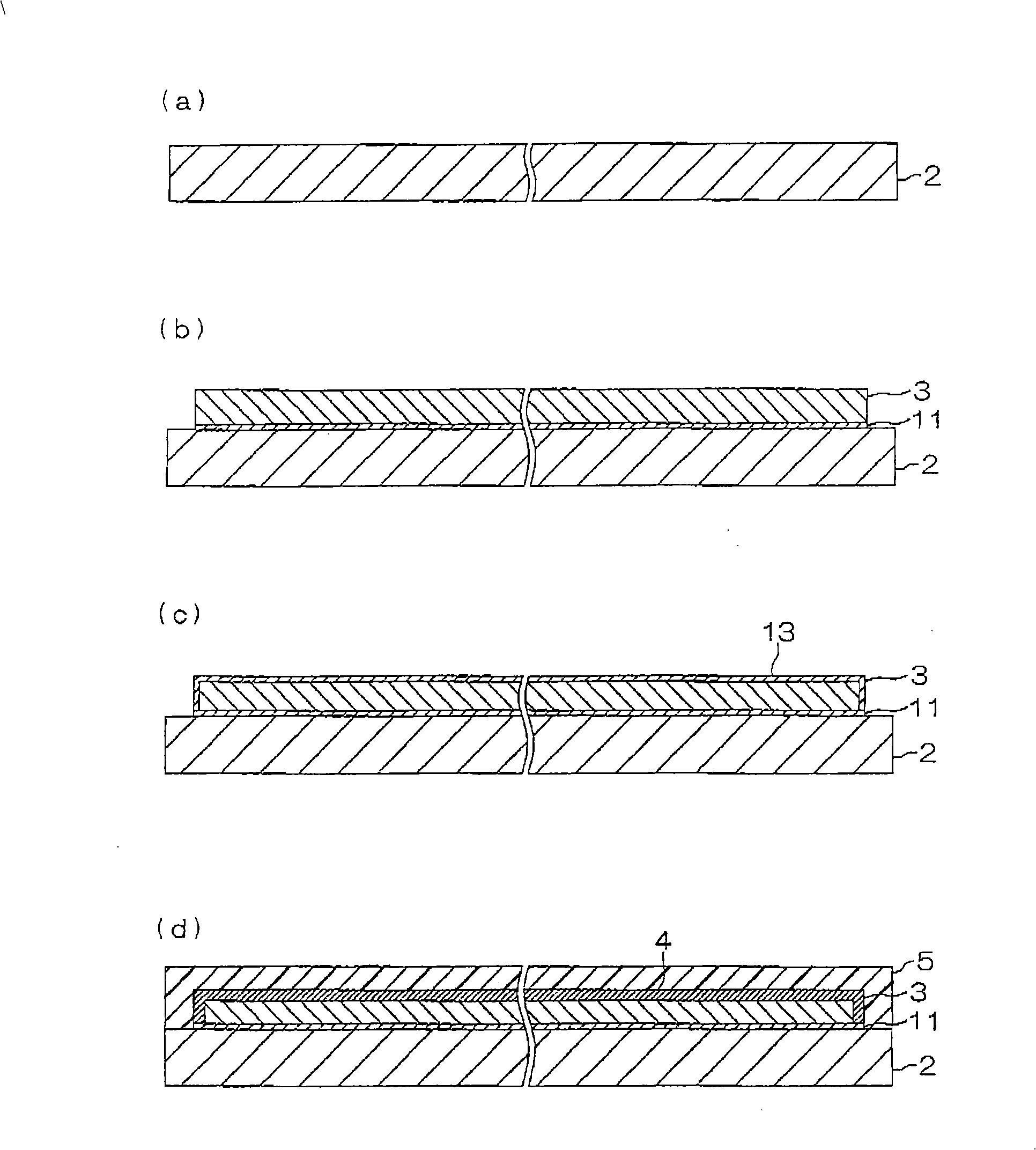Wired circuit board
A technology for wiring circuit substrates and substrates, which is applied in the direction of circuit substrate materials, printed circuits, printed circuits, etc., can solve the problems of increased transmission loss of conductor patterns, prevent ion migration, reduce transmission loss, and improve shape retention. Effect
- Summary
- Abstract
- Description
- Claims
- Application Information
AI Technical Summary
Problems solved by technology
Method used
Image
Examples
Embodiment 1
[0127] First, prepare a metal support substrate made of stainless steel with a thickness of 25 μm (see image 3 (a)) Next, a chromium thin film with a thickness of 50 nm and a copper thin film with a thickness of 100 nm were sequentially formed by sputtering on the entire surface of the metal supporting substrate to form a first metal thin film. Next, after forming a plating protection layer with a pattern opposite to that of the metal foil on the upper surface of the first metal thin film 11, a copper foil with a thickness of 3 μm is formed by electrolytic copper plating (refer to image 3 (b)). Then, form the first tin layer with a thickness of 0.4 μm by electroless tin plating on the upper surface of the copper foil, both sides in the width direction and both sides in the longitudinal direction (refer to image 3 (c)).
[0128] Then, a photosensitive polyamic acid varnish was applied to the entire upper surface of the metal supporting substrate including the first tin lay...
Embodiment 2
[0134] In addition to the 1st tin layer (refer to image 3 (c)) the thickness is changed to 0.3μm, the second tin layer (refer to Figure 4 Except that the thickness of (f)) was changed to 0.3 μm, the same operation as in Example 1 was performed to obtain a suspension board with circuit. The thickness of the first protective layer was 0.8 μm, and the thickness of the second protective layer was 0.8 μm.
Embodiment 3
[0136] Except that the lower base insulating layer is interposed between the metal thin film and the metal supporting substrate, the same operation is performed as in Example 1 to obtain a suspension board with circuit (refer to Figure 6 ).
[0137] That is, a varnish of photosensitive polyamic acid resin was applied to the entire surface of the metal supporting substrate, dried by heating at 90°C for 15 minutes, and cured by heating at 370°C for 120 minutes under reduced pressure after exposure and development. amination), thereby forming a lower base insulating layer with a thickness of 3 μm. Then, a chromium thin film with a thickness of 50 nm and a copper thin film with a thickness of 100 nm were sequentially formed by sputtering on the entire surface of the metal supporting substrate including the lower insulating base layer, thereby forming a first metal thin film.
PUM
| Property | Measurement | Unit |
|---|---|---|
| thickness | aaaaa | aaaaa |
| thickness | aaaaa | aaaaa |
| thickness | aaaaa | aaaaa |
Abstract
Description
Claims
Application Information
 Login to View More
Login to View More - R&D
- Intellectual Property
- Life Sciences
- Materials
- Tech Scout
- Unparalleled Data Quality
- Higher Quality Content
- 60% Fewer Hallucinations
Browse by: Latest US Patents, China's latest patents, Technical Efficacy Thesaurus, Application Domain, Technology Topic, Popular Technical Reports.
© 2025 PatSnap. All rights reserved.Legal|Privacy policy|Modern Slavery Act Transparency Statement|Sitemap|About US| Contact US: help@patsnap.com



